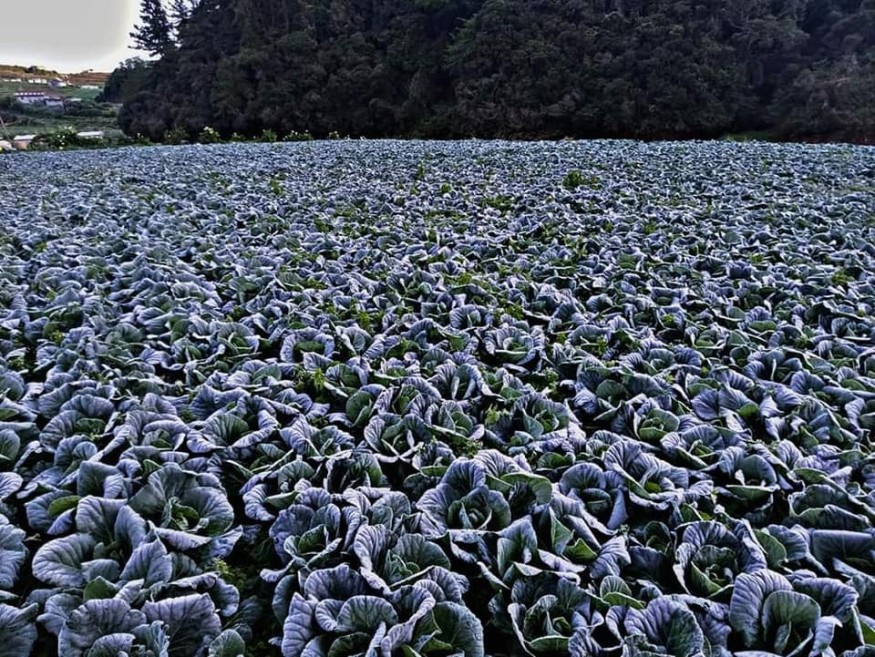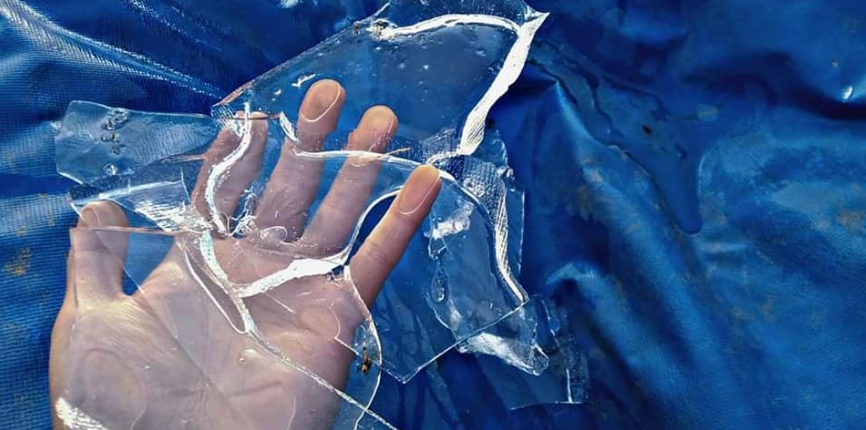As the temperature dropped, frost hits an agricultural town in the Philippines.

Because of the sudden temperature shift, many vegetables were covered in thin layers of icy frost. This has been the second time that it happened this month. Fortunately, no major damages have been noted so far.
The prevailing northeast monsoon's annual weather phenomenon is expected to last until March, and farmers fear that a prolonged 'andap' (local name for frost) will destroy their crops.
Meanwhile, Baguio City (one of the country's coldest places) has recorded its coldest temperature so far this year at 9.4 degrees Celsius. It may not sound that bad but keep in mind that the Philippines is a tropical country with a tropical climate, a dip in temperature is not normal. They do not get winters in the Philippines.
Related Article : How Do Experts Measure Snow in Mountains?
Frost
Frost is water vapor or water in gas form that becomes solid. Frost usually forms on objects like cars, windows, and plants that are outside in the air that is saturated or filled with moisture.

The frozen vapor is not good for many greens and vegetables as it can cause frost damage.
Frost Damaged Plants
A sudden drop in temperature is the common reason for frost. And frost can lead to plants getting frost damages.
The damage occurs when ice crystals form within plant tissue, damaging their cells. Leaves and tender new growth are usually affected first. Initially, they will appear wilted. Then, the wilted growth will turn brown or black and eventually become crispy. This means these affected parts of the plant have died.

Many farmers are also afraid of getting their plants damaged by the frost in the US, especially during winter. Some vegetable growers don't even plant during the cold season.
While many farmers and plant growers are tempted to remove the frost parts, it would be best not to. By leaving the damaged area alone, the plant will have the chance to regrow if there are no apparent major damage. The damaged parts can also act as insulators and prevent further freeze in the plant's internal structures.
Winter Farming
According to Jim Myers, a plant breeder and researcher from the Oregon State University, gardening might be trickier and riskier than usual during the winter.
Myers claimed that in order to still grow vegetation during the winter without having to risk losing everything from the cold, it would be best to ensure the vegetables a grower is planting during the season can withstand freezing temperatures. Hardy plants that would survive the harsh colds.
Cold weather doesn't kill these hardy plants; it merely slows their growth rate. For every rise of 18 degrees, the growth rate doubles, but that guideline is only applicable for an air temperature range of 40 to 98 degrees, Myers said.
If you plant cold-hardy vegetables from mid-August to early October, there is a chance they can mature by next spring if they survive in a vegetative state through the winter without reproducing.
© 2025 NatureWorldNews.com All rights reserved. Do not reproduce without permission.

